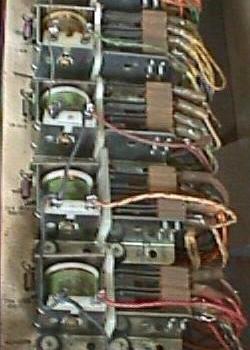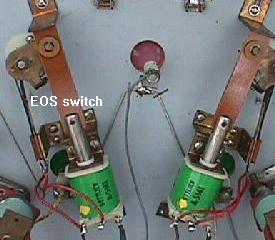
A relay is a small coil that pulls in, which activates a number of switches. So one switch turns on the relay coil, which in turn activates a number of other (normally open or normally closed) switches (from one to many). So you can have one switch (like a playfield switch) turn on a relay, which will then turns on (or turns off) many switches, which could control several game features.
AC relays have a copper "slug" center surrounded by an iron center. AC coils have a coil stop made with these same materials. This material creates a small magnet. This holds the magnetic field of the coil as the AC (alternating current) moves through zero volts (remember, AC volatage alternates from a positive voltage, to zero volts, to a negative voltage, and back to zero, then to positive voltage, and so on). An AC relay or AC coil stop will work in a DC circuit, but a DC relay or DC coil stop won't work in an AC circuit.
Some relays are designed so they may stay on for long periods of time. They can stay on without burning because they are low power, and consume limited juice. "Hold Relays" are designed to stay on sometimes the entire time the game is turned on. Hold relays are used on the coin mechanisms and for the game power hold (part of the tilt circuit).
